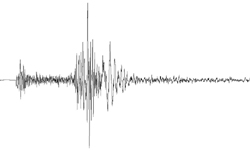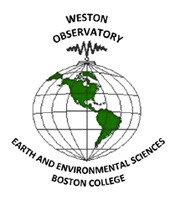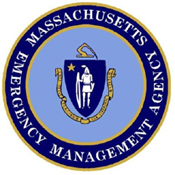Aftershock Probabilities
This forecast is based on the statistics of aftershocks typical for New England.
This is not an exact prediction, but only a rough guide to expected aftershock a ctivity.
This forecast may be revised as more information becomes available.
12/03/2015 Aftershock Probabilities
Aftershock Forecast was computed on: Friday, December 4, 2015 4:49 PM EST
Mainshock: Thursday, December 3, 2015 7:12 PM EST, Magnitude 3.0
MA, 10.0KM (6.2 miles) SE OF WESTON, MA
Probability that this event is a foreshock and there will be an earthquake on e unit of magnitude or greater in the next 30 days:
5%
Probability that this event is a mainshock and will be followed by one or mor e aftershocks of any magnitude in the next 7 days:
22%
Probability that this event is a mainshock and will followed by (one or more) aftershocks of magnitude 2.0 or greater:
20%
Background Info About Aftershocks
Mainshock - the earthquake of greatest magnitude in a series of earthquakes which occur over a relatively short period of time in a particul ar area.
Aftershocks - additional earthquakes that occur after the ma inshock and in the same geographic area. Usually an aftershock is smaller than t he mainshock, but occasionally an aftershock may be strong enough to be felt wid ely throughout the area and may cause additional damage, particularly to structu res already weakened in the mainshock.
Foreshock - an earthquake which occurs immediately preceding a mainshock in the exact same area in which the mainshock occurs.
Like most earthquakes, the recent earthquake is expected to be followed by nu merous aftershocks. Aftershocks are most common immediately after the mainshock; their average number per day decreases rapidly as time passes.
Aftershocks are most likely to be felt in the first few days after the mainsh ock, but may be felt weeks, months, or even years afterwards. In general, the la rger the mainshock, the longer its aftershocks will be felt.
Aftershocks tend to occur near the mainshock, but the exact geographic patter n of the aftershocks varies from earthquake to earthquake and is not predictable . The larger the mainshock, the larger the area of aftershocks. While there is n o "hard" cutoff distance beyond which an earthquake is totally incapable of trig gering an aftershock, the vast majority of aftershocks are located close to the mainshock.
As time goes on, the aftershocks will subside. As they do, we will revise the table below to reflect the diminishing chances of large aftershocks.
New England Earthquake Information
New England Earthqu ake Info:
Earthquake Information by State:
If You've Felt an Earthquake
Normally, earthquake s between magnitude 2.0 and 3.0 can be felt near the epicenter but cause no dama ge. Earthquakes between magnitude 3.0 and 4.0 are more widely felt (between 10 a nd 100 miles from the epicenter) but almost never cause damage. Earthquakes abov e magnitude 4.5-5.0 can cause minor damage (cracks in plaster and brick walls) n ear the epicenter. Earthquakes above magnitude 6.0 or so can cause more severe d amage to buildings.
If you believe you have felt an earthquake in New England, please do the f ollowing:
- Email the Weston Observatory at weston.observatory@bc.edu or call at 617-552-8300 to t ell us precisely when and where you felt the earthquake.
- If there is damage, call the Massachusetts Emergency Management Agency at 50 8-820-2000.
Earthquake Safety: Before, During and After an Earthquake
Links for Earthquake Safety and Hazard Mitigation Measures:


 < /p>
< /p>

